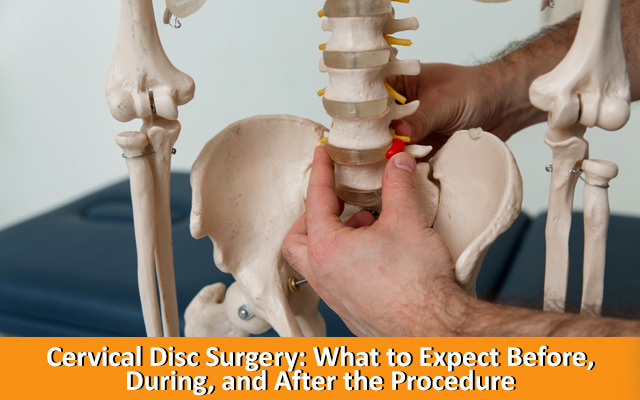If you’re dealing with severe neck pain, numbness, or weakness in your arms due to a damaged cervical disc, surgery might be the best option. Understanding what happens before, during, and after the procedure can help you feel more prepared.
Before the Surgery
The journey begins with a thorough evaluation by your doctor. Here’s what to expect:
- Diagnosis & Consultation: Your neurosurgeon will assess your symptoms, medical history, and imaging tests like MRI or CT scans to confirm if surgery is needed.
- Pre-Surgery Preparation: If surgery is recommended, you may need to stop certain medications, fast for a few hours before the procedure, and arrange for post-surgery care.
- Discussion on Risks & Benefits: Every surgery has risks, but your doctor will explain the expected benefits and possible complications to help you make an informed decision.
During the Surgery
Cervical disc surgery is usually performed under general anesthesia. The procedure generally involves:
- Removing the Damaged Disc: The neurosurgeon makes a small incision in the front or back of your neck to access the affected disc and carefully removes it.
- Stabilizing the Spine: Depending on the case, the space left by the removed disc is either filled with a bone graft (fusion surgery) or replaced with an artificial disc.
- Closing the Incision: Once the procedure is complete, the incision is closed, and you are moved to the recovery area.
The surgery usually takes a few hours, and most patients are monitored for a day or two before discharge.
After the Surgery
Recovery is an important part of the process. Here’s what you can expect:
- Hospital Stay & Immediate Recovery: Some patients can go home the same day, while others might need a short hospital stay. You’ll be monitored for pain, movement, and any complications.
- Post-Surgery Care: Your doctor will give instructions on pain management, wound care, and activity restrictions. It’s important to avoid strenuous movements that could strain your neck.
- Physical Therapy: Rehabilitation exercises help restore movement, strength, and flexibility over time. Your doctor may recommend a structured physiotherapy plan.
- Gradual Return to Normal Activities: Most patients can resume light activities within a few weeks, but complete recovery may take a few months. Regular follow-ups ensure that healing is on track.
If non-surgical treatments haven’t relieved your symptoms, surgery may be the next step. It can significantly improve quality of life by reducing pain and restoring mobility. For those needing expert lumbar & cervical disc treatment, consulting an experienced neurosurgeon like Dr. Rohit Mishra is essential for the best outcome.
Conclusion
Cervical disc surgery can be life-changing for individuals struggling with persistent neck pain and nerve-related issues. If you’re considering surgery, make sure to discuss all aspects with your doctor and follow post-surgery care guidelines for a smooth recovery. At Dr. Rohit Mishra’s clinic, advanced surgical techniques and expert care ensure the best results for patients seeking lumbar & cervical disc treatment in Kolkata.
If you’re experiencing severe neck pain, don’t wait—consult an expert and take the first step toward a pain-free life.

